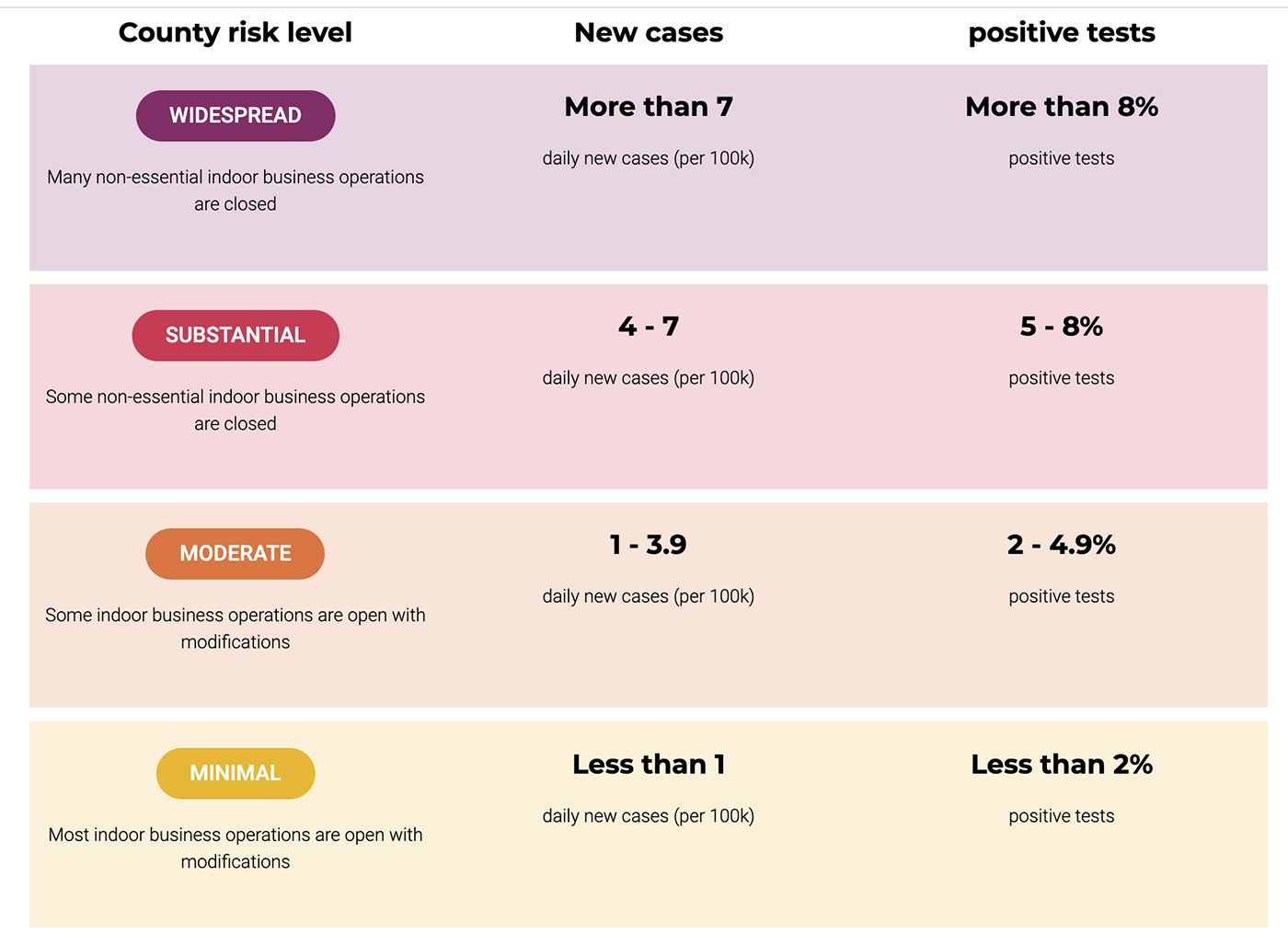As of Tuesday, three more Bay Area counties joined the four already in the second or "red" tier of the state's pandemic monitoring map, meaning that they're eligible to reopen indoor dining, churches, and gyms at limited capacity, and more.
It's hardly a moment to celebrate being out of the woods when it comes to COVID-19. The way things worked back in June was that a bunch of announcements came out about businesses reopening, we had a bad week with a spate of new cases and hospitalizations, and everything had to shut down again.
But it's at least cause for some cheers for struggling businesses that, with plenty of safety precautions and limited capacity, can welcome customers back indoors in Alameda, San Mateo, and Solano counties as of today. The state's Department of Public Health and made its weekly update Tuesday at noon based on shifting COVID metrics, and now seven out of nine Bay Area counties (78%) are in the red tier, indicating "substantial" but not "widespread" ongoing disease transmission. Reaching the red tier means that these counties have met certain criteria for at least two weeks — namely 7 or fewer daily new cases per 100,000 residents (the figure is adjusted based on how much testing a county is doing), and a positivity rate of 5 to 8 percent.

San Francisco, Santa Clara, and Napa counties have already moved into the red tier, and San Francisco expects to move on to the orange tier by next week — which is when Mayor London Breed has indicated that restaurants will be permitted to open at 25-percent capacity. The city is lagging behind the state's guidelines out of an abundance of caution, and thus the other counties in the red tier may now reopen their restaurants indoors as well — though Santa Clara County is, like SF, holding off.
Indoor dining has been happening for two weeks already in Napa county, and some diners there tell Eater that they're getting more comfortable with the concept.
The seven red tier counties around the Bay are now technically able to reopen museums, movie theaters, hair and nail salons, places of worship, and gyms at limited capacity indoors. To look up whether and how specific businesses may open, just use the interactive tool here.
Sonoma and Contra Costa counties remain in the purple zone, though both will likely progress into red soon based on recent case stats. Overall, as the Los Angeles Times reported today, the state's COVID positivity rate among those being tested just hit 3 percent, which is a major milestone in the pandemic, and that ratio dropped to 2.8 percent in the last seven days. Still, experts caution that widespread wildfires in the state have led to lags in testing, and that we still may not be seeing a predicted surge following Labor Day social gatherings, though that should be showing up in the data within days, if it occurs.
"This disease has not gone away," Governor Gavin Newsom said. "Quite the contrary."
Much of Southern California remains in the purple tier as of this week, as metric there have only improved slightly since the July/August surge. And San Diego County moved from purple to red but might slip back to purple again due to an outbreak at San Diego State.
As of Tuesday, the Bay Area has seen just under 100,000 cumulative COVID cases out of the state's total of nearly 800,000. We have also seen less than 10% of the state's total deaths in the region (1,410 out of 15,000), despite having 20 percent of the state's population in our nine counties.
San Francisco has been touted for keeping its death rate remarkably low — just 99 deaths out of over 10,000 cases, or 0.87%, which is the lowest of any major city in the U.S.

